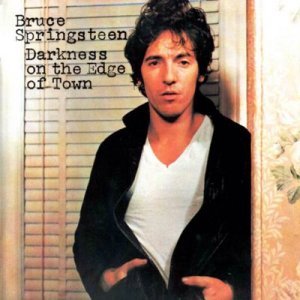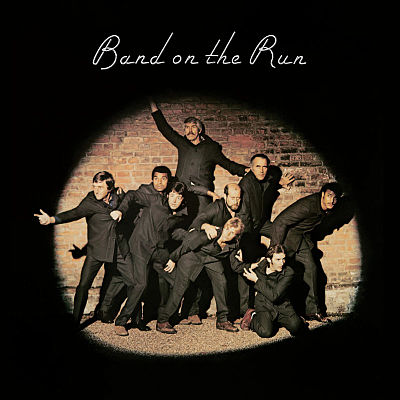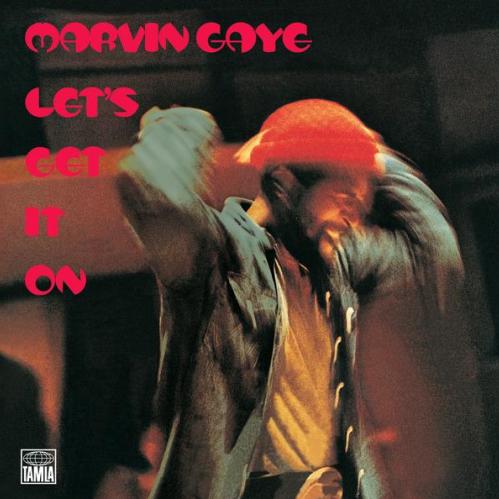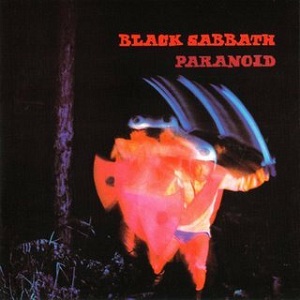We’re at halftime, ladies and gentlemen!!
Enjoying the countdown so far? Well, here’s where shit gets really real. The top 50 albums of the Seventies, as voted on by the Popblerd staff.
See a title missing? Drop us a line, either in the comments section, or by emailing us at popblerd1@gmail.com.
If you can correctly guess what the top 3 albums are before they’re posted, we’ll enter you in a drawing to win a copy of any album in the Top 100, courtesy of us!!
If you need to backtrack, you can check out Part 1, Part 2, Part 3, Part 4 and Part 5.
Now, let’s move on.
 50. Darkness on the Edge of Town (Bruce Springsteen, 1978)
50. Darkness on the Edge of Town (Bruce Springsteen, 1978)
Appeared on: 5 lists. Drew’s #7 album, Dennis’s #10 album
Following the massive success of Born to Run, Springsteen was forced to abstain from recording due to legal complications with his management. That forced exile from the studio explains the rather fertile period of songwriting that Springsteen underwent following Born to Run (now thoroughly documented on the 2010 boxed set edition of the album). Darkness didn’t perform quite as well as its predecessor, but still managed to go triple platinum. More importantly, it remains highly regarded among Springsteen fans as one of his greatest artistic achievements.
As the Boss himself has put it, Born to Run was about the youthful hope of escaping the confines of small town life – Darkness is about coming to terms with living in within those confines. The album is littered with Springsteen classics that weren’t hits, but are now showstopping fan favorites covering a broad spectrum of emotion: hope in the anthemic “Badlands” and “The Promised Land,” loss and despair in the title track, and urgent desire in “Prove it All Night,” while “Adam Raised a Cain” addresses a tense father-son relationship (and contains some of the best guitar work of Springsteen’s career). Darkness on the Edge of Town is a bit of a sleeper; the album seems to gain more currency as the years pass. Indeed, on a personal note, it’s become my favorite Springsteen record in recent years. (Dr. Gonzo)
49. Parallel Lines (Blondie, 1978)
Appeared on: six lists. John H.’s #15 album
Although Blondie had been a staple of the late NYC scene for a few years, it was the the classy and sassy Parallel Lines that brought the band to national attention. Often cited as their essential album, Parallel Lines is emblematic of what came to be known as new wave, retaining a subdued hint of punk attitude beneath a veneer of synth lines and danceable rhythms. Beginning with a fantastic cover of The Nerves’ “Hangin’ on the Telephone,” the album contains three other Blondie classics: the overly determined “One Way or Another,” “Sunday Girl” (here presented in its fully English language version), and the disco-influenced “Heart of Glass.” The latter was a point of contention among Blondie’s NYC contemporaries, putting the band’s integrity into question (in a 1981 interview, The Ramones famously chided Blondie for taking the easy way out by capitulating to disco styles). Even so, the song did givee Blondie their first chart-topping single, which could be read as confirmation of their selling out (although that still seems less egregious than say, “Pet Cemetery“). While the band would go on to thrive in the early MTV era and even help to nudge hip hop into the mainstream, Parallel Lines remains their definitive LP. (Dr. Gonzo)
48. The Ramones (The Ramones)
Appears on: 5 Lists. Dan W.’s #15 album, Jay K.’s #16 album.
We can argue for days about the genesis of punk rock, but it’s only when we examine The Ramones’ self-titled debut that we can truly see traces of the DNA that informs modern day punk. Other punk acts would be more incendiary, more barnstorming, more anti-establishment, better musicians; but The Ramones? The Ramones were downright cuddly. They bopped about in their adorable matching greaseball uniforms. They sang about girls and cars. They played a brand of bruised, ragged pop music, often sandwiched into sub-two-minute bursts. Was there anything dangerous about The Ramones? Of course there wasn’t. But listening to their debut album, the wealth of sprightly melodies and swaying girl-group themes contained therein, the way one song careens into the next with reckless abandon, it became immediately apparent that we could all enjoy the energy of punk without having to be too dark and cynical about it. Sometimes, we could bop along like little punks, and sing three-chord love songs to boot. Standouts? Take your pick. I’ll take “Judy Is A Punk”, but whatever your choice is, that’s also the right answer. (Drew)
47. Never Mind the Bollocks, Here’s the Sex Pistols (The Sex Pistols)
Appears on: 5 Lists. Jay and Mike Schiller both voted it #23.
Never Mind the Bollocks, Here’s the Sex Pistols is, at its very core, the sound of angst. It’s loud, brash, and almost constantly on the verge of running off the rails. It is the sound of three (four if you count Sid, but let’s face it: you can’t ) disenfranchised young lads, under the benefaction of Malcolm McLaren, thumbing their noses at the world. It is the sound of self-destruction. Never Mind the Bollocks… was released in October of 1977; by January of 1978 the band was done, with Johnny Rotten leaving the fray after a nightmarish U.S. tour. Yet this record is ever on the lips of nearly every critic and fan alike when the question of influential ’70s albums is discussed. What was it about the three chord missives that has captured the hearts and minds of generations of teenagers, and inspired countless acts to pick up the place where the Pistols left off? Could it be that we never heard what the second Sex Pistols’ record sounded like; thereby casting this one perfect moment in stone (or, vinyl, as it were) for the rest of time. Or, maybe its just the fact that when you’re a teenager, the sound of snotty, three chord, barely coherent, anti-authoritarian noise sounds like the very thoughts running through your head. (Michael Parr)
 46. Band on the Run (Wings, 1973)
46. Band on the Run (Wings, 1973)
Appears on: 5 Lists. #9 on Steve’s list, #7 on George’s list.
Even a former Beatle is vulnerable when rehearsed band members quit at inopportune times. Paul McCartney learned that lesson in 1973 when guitarist Henry McCullough and drummer Denny Seiwell left Wings just before the band left Britain to record in Nigeria.
Why Nigeria? McCartney later told The Guardian he wanted a change of pace from recording in the UK. After rejecting studios in China and Brazil, McCartney decamped for Lagos, bringing only then-wife Linda, Denny Laine and former Beatles engineer Geoff Emerick.
Afrobeat pioneer Fela claimed the British invasion was coming to Nigeria to steal native sounds, a charge McCartney later recalled rejecting, telling the local musician, “Do us a favour, Fela, we do OK. We’re all right as it is. We sell a couple of records here and there.”
The venue change and fewer musicians may have unlocked McCartney’s creative juices. Band on the Run became his most critically acclaimed music after The Beatles. The noted perfectionist allowed band member Denny Laine a co-writing credit, had the trusty Emerick on hand to co-produce and wrote some of his most whimsical elements evoking a late Beatles album with two rock standards.
“Jet” and “Band on the Run” both ripped out of speakers with bold intros. Jet’s began with a horn-driven, distorted guitar sound from Macca’s “Live and Let Die” James Bond track. The lyrics made little sense, the song title fit with the Wings concept, and McCartney insisted that Jet was the name of a horse.
Band on the Run was a more straightforward sound kaleidoscope of intertwining guitars, early synthesizers and double-tracked lush harmonies that became one of the band’s defining sounds. In grand Beatles style, the track is a multi-movement song with sections as distinct as those found in “A Day in The Life”. Quirky tracks like “Mrs Vanderbilit” with its “Ho, hey ho” chorus were just as elaborate although fan favorite “Let Me Roll It” followed a traditional British blues formula McCartney returned to on “Venus and Mars” and “London Town”.
Paul McCartney, with and without Wings, continued making music for decades after Band on the Run. Some releases were just as popular, but during 1974, Macca and his rabbits on the run were considered among the best post-Beatles record any of the Fab Four made. (George)
45. Aja (Steely Dan)
Appears on: 6 lists. Big Money and John H. both placed it at #13 on their individual lists.
I cannot tell a lie. I love Steely Dan a great deal. I own all their albums (at least pre-reunion) and I long for a Becker/Fagen tour so I can scratch them off my bucket list. That said, I’ll admit that their music is processed to a sheen that I might pooh-pooh if it came from another band, and there’s also the fact that their lyrics are borderline inscrutable, perhaps to obscure the fact that Donald Fagen is a little bit of a creeper.
While Steely Dan (again, pre-reunion) has one of the most flawless catalogs of any band in pop, rock or soul history (and you can file their music into any or all of those three categories,) the crown jewel of the catalog is Aja. While it wasn’t the first Steely Dan album I fell in love with (that would be its predecessor, The Royal Scam, which inexplicably missed this list), it contains some of the duo’s best songs (“Deacon Blues” and “Black Cow” are particularly amazing) and, above all, it has “Peg”.
“Peg” was the first Steely Dan song I immediately recognized as a Steely Dan song, mainly because it was sampled by De La Soul for “Eye Know,” which is one of the best love songs ever made in hip-hop history. It also contains a healthy serving of Michael McDonald. Granted, McDonald was already a star by this point as a member of The Doobie Brothers, but “Peg” is one of the best insertions of McDonald vocals on a song ever. It kicked off a decade-long trend in which McD appeared on every fourth song on Top 40 radio. I was fortunate enough to see Fagen and McDonald perform it live about a year ago. Talk about a jizz-in-your-pants moment… (Big Money)
 44. Let’s Get it On (Marvin Gaye)
44. Let’s Get it On (Marvin Gaye)
Appears on: 6 lists. #28 on Drew’s list, #17 on Heavy Soul Brutha’s list, and #26 on KJ’s list.
“I BEEN REALLY TRYYYYIIN’, BABY. TRYIN’ TO HOLD BACK THIS FEELING…FOR SOOOOOO LONG.”
Been there? Of course you have.
The title track of Marvin Gaye’s Let’s Get it On set the stage for three decades of R&B begging. MJ’s “Lady in My Life,” Prince’s “Do Me Baby,” Keith Sweat’s whole damn career can be traced back to this one song. Gaye, at the peak of his powers, coos and cajoles and I’m pretty by the end of that song, the panties he was trying to get had been thrown off and were somewhere hanging from a chandelier. And that was just the beginning.
After busting his first metaphorical nut, Marvin gets his smooth loverman on something fierce. “You Sure Love to Ball” was risque for its time, yet seems more like a sly come-on now than an X-rated invite. “Come Get to This” finds Marvin circling back to his doo-wop days with The Moonglows, and the immortal “Distant Lover,” although best experienced in the live version released in 1974, is a more traditional love song than appears on the rest of this album (which is not a demerit, mind you.)
After you’ve seen, conquered, and come…what’s left? Disappointment. “Just to Keep You Satisfied,” the heartbreaking ballad that closes Let’s Get it On, is one of Marvin’s most unappreciated, yet finest moments. Rhapsodic, heartfelt, and just plain sad, it’s the inevitable comedown after an album full of sensual rushes. The album is the perfect audio encapsulation of something Whitney Houston sang on one of her own hit ballads. “The ride with you was worth the fall.” Indeed. (Big Money)
43. Exodus (Bob Marley & the Wailers, 1977)
Appears on: 5 lists. #9 on KJ’s list, #10 on Jon’s list, and #11 on Big Money’s list.
Dubbed the best album of the 20th century by Time Magazine, Exodus may fall short of that milestone (although not by much, in my humble opinion,) but it’s easily one of the most important albums of its time period. A lot of folks don’t give Bob Marley as much credit for blending the social, the spiritual and the sexual in much the same way that, say, Marvin Gaye or Prince does. However, he was just as good at it, and this album is definitive proof. Recorded in London (after an assassination attempt forced Marley out of his native Jamaica for a time,) the album contains a slightly more fleshed out sound musically than its predecessors. The title track, recorded and released just days prior to the assassination attempt, is as clear a mission statement as any artist has produced in their career. Everyone from The Clash to Bono to Chuck D. took notes.
On the other side of things, “Turn Your Lights Down Low” and “Waiting in Vain” (a song that always runs through my head when I’m pining for someone) bear a heavy American soul influence, owing much to the doo-wop groups Marley grew up imitating/idolizing, while “Jamming” was a classic reggae party-starter. The sheer breadth of material covered on Exodus still amazes. Of course, the album closes with two songs that provided endless inspiration for ganja-soaked frat parties and Carnival cruise vacations: “Three Little Birds” and “One Love/People Get Ready.” Although the true context of those songs has been diluted by overexposure, consider the circumstances under which they were recorded, and you’ll see that the sincere positivity that shines through is nothing short of miraculous. (Big Money)
42. Moondance (Van Morrison)
Appears on 5 lists. #12 on Luc’s list, #16 on Heavy Soul Brutha’s list, and #20 on Rob’s list.
I didn’t know Van Morrison from Van Halen until I worked at Tower Records in the mid Nineties. The hippie-ish store manager was a huge fan of Van the Man, and The Best of Van Morrison was a staple on the jukebox at the Upper West Side bar we frequented after work. Right around that time, Brian McKnight came out with a cover of “Crazy Love,” and my infatuation with the songs on Moondance, if not the album itself, began. A half decade or so later, I finally wound up buying the album, and I fell in love. Morrison’s most accessible, and most commercially successful album, Moondance contains some of the greatest love songs in history. We can start with the jazzy title track, continue through the ethereal “Into the Mystic” and close on the perfectly-written and sung “Glad Tidings.” If I can go back to “Mystic” for a second, I will say this: if you ever decide to make a list (whether one of these lists, or a playlist on iTunes or Spotify) of the best love songs ever recorded, and you do not include “Into the Mystic,” you are WRONG. Plain and simple.
Moondance is where Celtic folk and American soul collide, and it still sounds like gold forty-some years later. (Big Money)
 41. Paranoid (Black Sabbath, 1970)
41. Paranoid (Black Sabbath, 1970)
Appears on: 7 lists. Jay K. voted it #24.
Depending on who you talk to, the seeds of heavy metal were sown by the likes of The Kinks, The Who, Jimi Hendrix, Cream, Led Zeppelin and Steppenwolf. Yet there’s no denying that the sound of metal really took shape in 1970, when Black Sabbath dropped the double whammy of its self-titled debut and Paranoid on the world. Powered by Tony Iommi’s sludgy monster riffs and the devastating rhythm section of Geezer Butler and Bill Ward, Sabbath bludgeoned its way into the rock spotlight with instant classics like “Iron Man,” “War Pigs” and the title track. But it was the disaffected, spooky vocals of John “Ozzy” Osbourne that solidified Sabbath’s uniqueness and made them stand out among the other hard rock acts of the day. Although Ozzy was probably more of a hippie than anything, the occult themes that Butler wove into the band’s lyrics and Iommi’s tuned-down riffs gave Sabbath a foreboding sound that made them a parent’s nightmare. “Electric Funeral” and “Hand of Doom” were worthy additions to the Sabbath canon, Ozzy wailing over Iommi’s pummeling guitar. It wasn’t all sturm und drang, though; “Planet Caravan” had an airy, Middle Eastern feel, while the trippy “Fairies Wear Boots” was inspired by the copious amounts of weed the band was ingesting at the time. At this point, Sabbath was a band just hitting its stride. It wasn’t until a few more albums that the drugs and booze started to really take their toll. (Jay)


3 comments
John says:
Mar 19, 2013
Aja is amazing, and another album I have a deep personal appreciation for. Kudos to Gonzo for recognizing the benchmark that Parallel Lines set for Blondie, and I love that Big Money called out “Into the Mystic,” because he’s spot on.
Gonzo says:
Mar 19, 2013
Big Money hit the nail on the head. I’m quick to deride most albums that are unnecessarily overproduced, but somehow that heavy layer of polish always works for Steely Dan.
I also recently watched the Paranoid Classic Albums doc, which put me into a Black Sabbath loop for a solid week. Now wishing I’d bought that boxed set while it was still in print.
Big Money says:
Mar 21, 2013
Wait, so The Ramones called Blondie out for selling out? How ironic (and I’d forgotten about “Pet Sematary.”
This list, I have to admit, is pretty awesome.